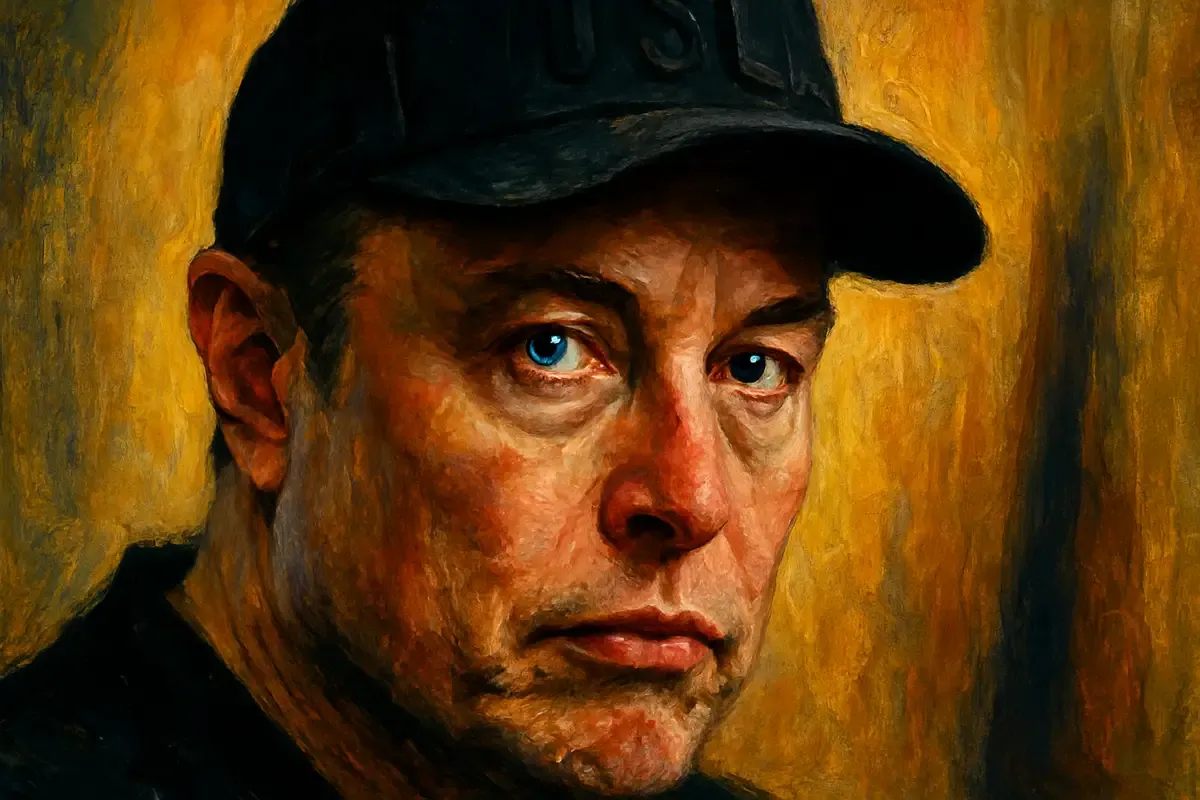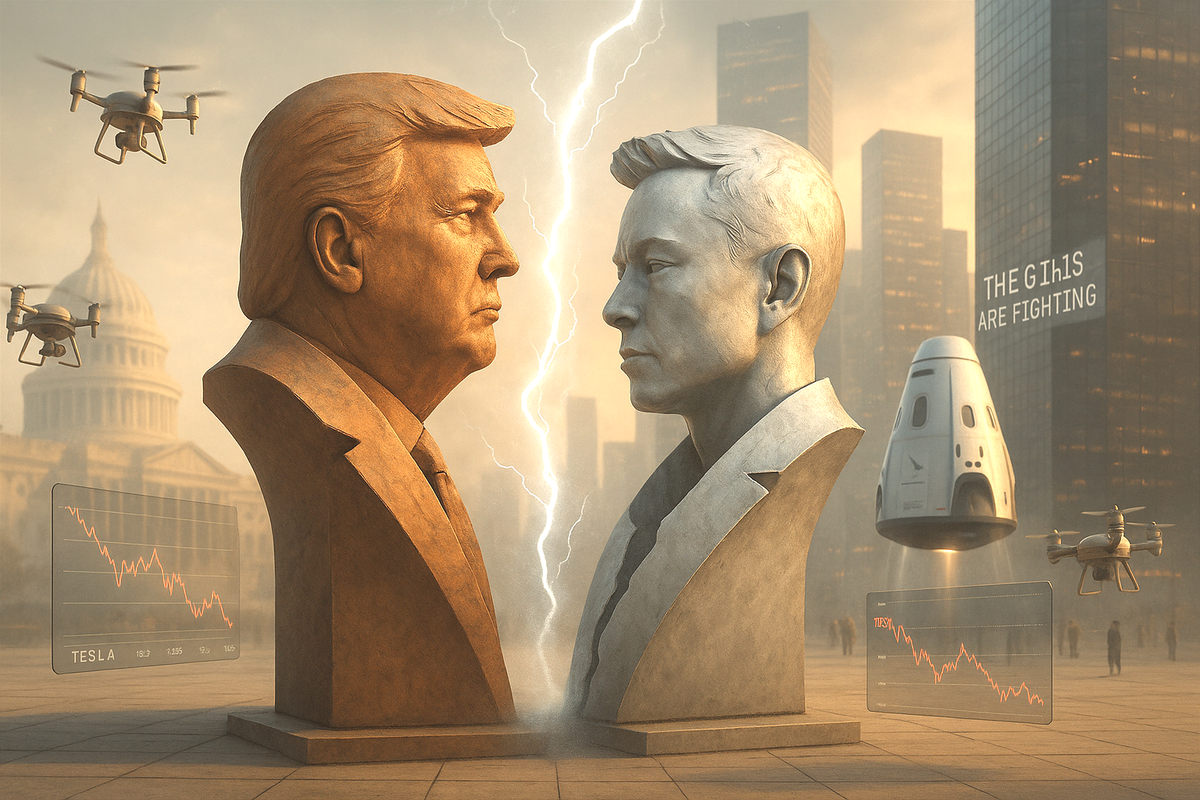Five Replace Fifty. Chips Stay Home.
Good Morning from San Francisco, Coca-Cola swapped fifty crew members for five AI specialists. Production time collapsed from a year
Tesla reports third straight quarter of falling profits while Musk's political activism alienates core customers. Now the company bets everything on unproven robotaxis as EV sales plummet and regulations pile up.

💡 TL;DR - The 30 Seconds Version
👉 Tesla reports third straight quarter of falling profits with revenue down 12% to $22.5 billion and automotive sales plunging 16%.
📊 Musk's $290 million Trump backing and far-right politics sparked global protests, alienating the liberal customers who built Tesla's success.
🏭 Trump's July bill kills the $7,500 EV tax credit on September 30, while tariff costs already jumped $300 million this quarter.
🌍 Tesla operates only a tiny invite-only robotaxi fleet in Austin while Waymo runs fully autonomous services across multiple cities.
🚀 Tesla's $1 trillion valuation depends entirely on Musk's robotaxi promises, but the car business is collapsing faster than robots arrive.
Tesla's nightmare is getting worse. The company just reported its third straight quarter of falling profits, with revenue down 12% to $22.5 billion and automotive sales plunging 16%. CEO Elon Musk warned investors to brace for "a few rough quarters" ahead, though he quickly added: "I'm not saying that we will, but we could."
Here's what happened. Tesla sold 13% fewer cars this year. Revenue from regulatory credits dropped from $890 million to $439 million. That's a 51% nosedive in what used to be easy money.
The earnings mess is just the start. Musk's political transformation has alienated the liberal customers who built Tesla's early success. His $290 million backing of Donald Trump, his stint running the Department of Government Efficiency, and his recent endorsement of Germany's far-right AfD party sparked protests outside Tesla showrooms worldwide. When your core customers start viewing your CEO as toxic, selling cars becomes a lot harder.
Musk's political pivot wasn't just controversial—it was expensive. Tesla's brand took a direct hit as environmentally conscious buyers, the company's original base, looked elsewhere. In Europe, Tesla's market share fell for the sixth straight month to 2.8% in June from 3.4% a year ago, while Chinese competitors like BYD gained ground with cheaper models.
The timing couldn't be worse. Trump's "One Big Beautiful Bill" kills the $7,500 federal EV tax credit on September 30, making Teslas effectively more expensive overnight. The same legislation ends clean-air penalties that forced other automakers to buy Tesla's regulatory credits—revenue Tesla gets for free because its cars are fully electric.
Tesla's pain comes from multiple directions. The company dumped 75% of its bitcoin holdings in 2022 when the cryptocurrency traded around $19,000. Bitcoin now sits at $118,000. That missed opportunity cost Tesla billions in potential gains.
"We started seeing the impact of tariffs," CFO Vaibhav Taneja told analysts. Tesla's costs jumped $300 million just from recent tariff increases, with more pain ahead as the company relies heavily on imported materials and components.
Faced with a crumbling car business, Musk is doubling down on his robotaxi vision. He promised investors that Tesla would reach "half the population of the U.S. by the end of the year" with autonomous ride services and scale up fully by late 2026. The problem? Tesla currently operates only a tiny fleet in Austin that isn't even open to the public.
Getting regulatory approval will prove much harder than Musk suggested. California regulators confirmed Tesla hasn't applied for the permits needed to charge passengers for autonomous rides. Alphabet's Waymo logged over 13 million testing miles and secured seven regulatory approvals over nine years before getting permission to operate commercially. Tesla has logged just 562 testing miles in California since 2016.
"Tesla cannot afford a misstep with the robotaxi service," said Camelthorn Investments adviser Shawn Campbell, who owns Tesla shares. "The wheels are coming off" the automotive business, with sales declining in "almost every market."
Arizona might approve Tesla's permits by month's end. But every state works differently. Each wants its own approvals, testing rules, and safety plans. Musk's timeline assumes everything goes perfectly.
While Tesla struggles with politics and permits, competitors aren't waiting. Chinese automakers are flooding global markets with cheaper EVs, eating into Tesla's market share outside the U.S. Even in America, traditional automakers are catching up with their own electric models.
Tesla promised a cheaper model to compete with budget competitors, saying limited production started in June. But without official guidance for the rest of 2025—a departure from earlier promises of growth—investors are losing confidence.
"Management initially guided for deliveries growth in 2025. We interpret no guidance as a signal that management is no longer forecasting volume growth," Morningstar analyst Seth Goldstein wrote after the earnings call.
Tesla trades at $1 trillion because Musk promises robotaxis and robots will make it "the most valuable company in the world by far." Without that promise? Tesla is just another car company losing sales with old models.
Musk has made the same promise every year since 2016. Full self-driving is always "next year." His Austin robotaxi service proves how far behind Tesla is. Waymo runs actual driverless cars in multiple cities. Tesla's tiny fleet still needs a human watching.
Investors have to pick. Either Musk delivers on AI and robots, or Tesla becomes another failing car company. Right now, the car business is falling apart faster than the robot business is coming together.
Trump insists the policy changes aren't personal. "I want Elon, and all businesses within our Country, to THRIVE, in fact, THRIVE like never before!" he posted Thursday. But good intentions don't fix Tesla's fundamental problems.
Why this matters:
• Musk turned Tesla from a car company into a political lightning rod, destroying relationships with the exact customers who made electric vehicles mainstream
• The robotaxi pivot looks increasingly desperate as regulatory realities clash with Musk's promises—if this bet fails, Tesla's trillion-dollar valuation becomes impossible to justify
Q: What exactly was Musk's role in Trump's government?
A: Musk ran the Department of Government Efficiency (DOGE), which aggressively cut federal agency budgets. He resigned in May 2025 to refocus on Tesla, but the damage was done. The role made him a lightning rod for protests outside Tesla showrooms worldwide.
Q: When exactly does the EV tax credit disappear?
A: September 30, 2025. Trump's "One Big Beautiful Bill" signed on July 4 kills the $7,500 federal tax credit that helped Tesla sales. Analysts estimate this could cost Tesla up to $1 billion in annual profit.
Q: How far behind is Tesla compared to Waymo in robotaxis?
A: Waymo logged over 13 million testing miles and got seven regulatory approvals over nine years before launching commercial service in 2023. Tesla has logged just 562 testing miles in California since 2016 and hasn't reported any autonomous miles in six years.
Q: What permits does Tesla actually need for robotaxis?
A: Tesla needs permits from both state DMVs and public utilities commissions to test and operate autonomous vehicles. California confirmed Tesla hasn't applied for the additional permits needed beyond basic testing. Each state has different requirements and timelines.
Q: How much has Tesla stock fallen this year?
A: Tesla shares dropped nearly 18% in 2025 before the latest earnings report, then fell another 6% in premarket trading Thursday. Despite the $1 trillion market cap, investors are losing confidence in both the car business and robotaxi timeline.
Q: What's Tesla's cheaper model supposed to compete with Chinese EVs?
A: Tesla started limited production in June 2025 of a lower-cost model designed to compete with budget competitors like China's BYD. The company expects to ramp up production in the second half of 2025, but hasn't released pricing details.
Q: How much money did Tesla lose from regulatory credits dropping?
A: Tesla's regulatory credit revenue fell from $890 million in Q2 2024 to $439 million in Q2 2025—a $451 million drop. These credits come from selling emissions allowances to other automakers who can't meet clean-air standards.
Q: How much did tariffs actually cost Tesla this quarter?
A: CFO Vaibhav Taneja said tariff costs increased about $300 million sequentially, with two-thirds hitting automotive and the rest energy. Tesla relies heavily on imported raw materials and components, making it vulnerable to trade war escalation.



Get the 5-minute Silicon Valley AI briefing, every weekday morning — free.